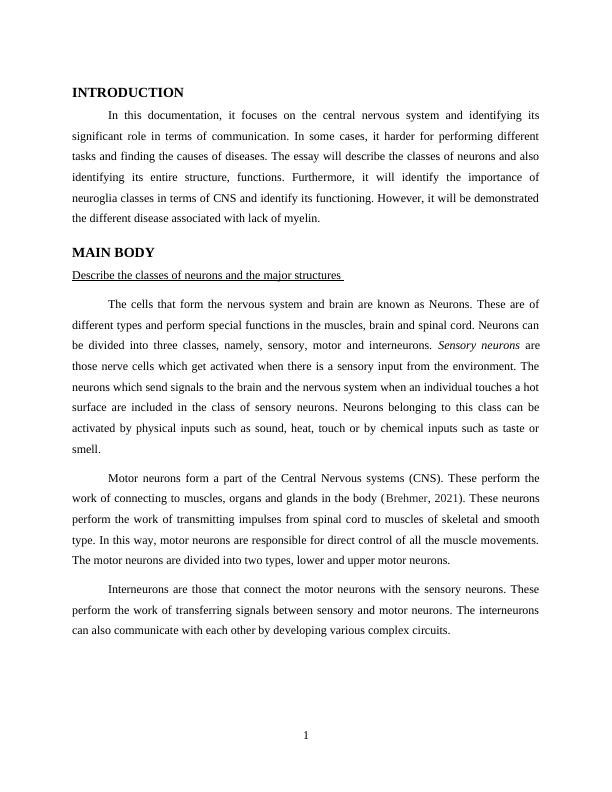Classes of Neurons and Neuroglia in CNS: Structure, Function, and Associated Diseases
Added on 2023-06-09
9 Pages1919 Words495 Views
End of preview
Want to access all the pages? Upload your documents or become a member.
Human Nervous System and Endocrine System PDF
|11
|2148
|147
Biological Communication
|6
|1311
|129
Human Nervous System & Endocrine System Assignment PDF
|12
|2375
|238
Homeostasis, Coordination & Control and the Excretory System (Doc)
|8
|1610
|452
STRUCTURE AND FUNCTION OF NERVOUS SYSTEM
|10
|1968
|319
Report on Biological Communication Systems - Desklib
|8
|1573
|254



